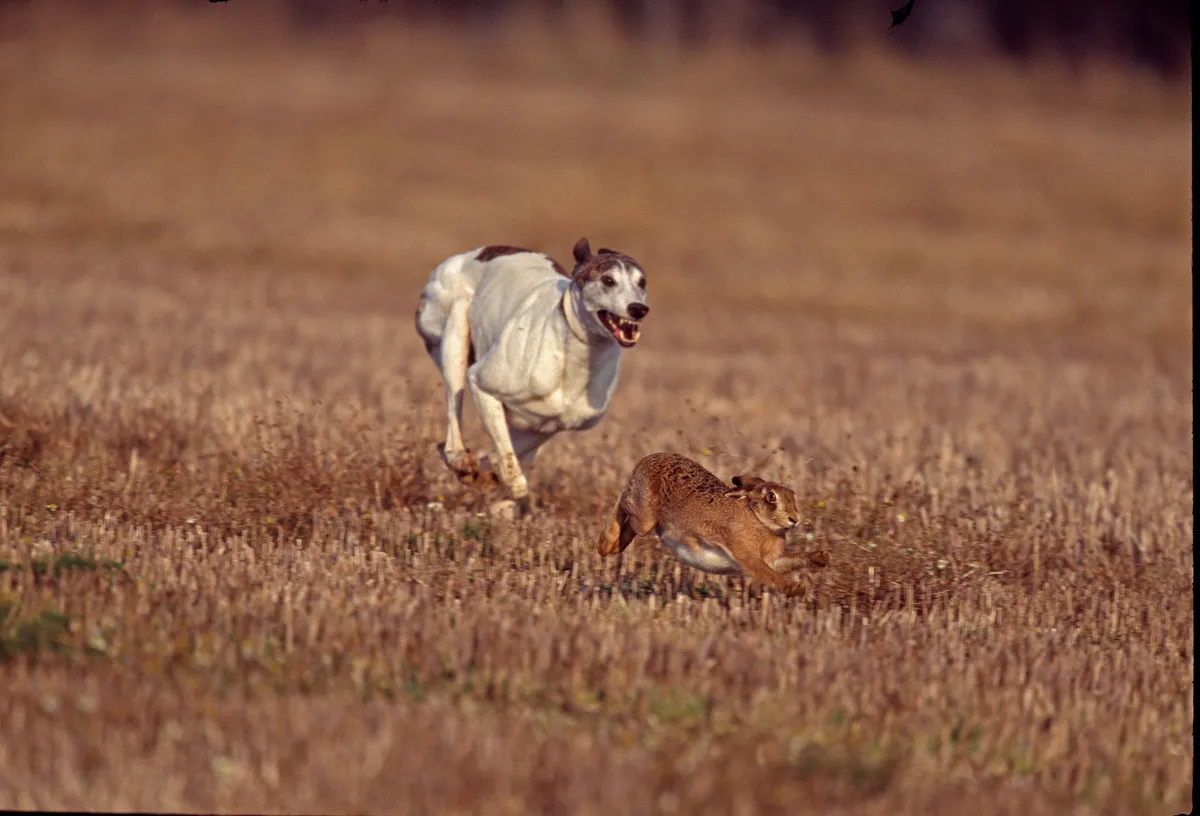The hare is known for its great agility and speed thanks to their powerful back legs. If you're lucky enough to spot one in the wild it is an incredible spectacle to watch them sprinting across the landscape – and early spring is the ideal time to see them when the boxing and mating season commences.
Learn more about this elusive and fascinating species in our expert hare guide, including the types of species of hare found in the UK, habitat, breeding and the best places to see them in the wild.
What species of hare are found in the UK?
There are three types of hare in the UK: the brown hare Lepus europaeus, the mountain hare Lepus timidus and the Irish hare Lepus timidus hibernicus, which as its Latin name suggests, is a subspecies of the mountain hare.
Brown hare
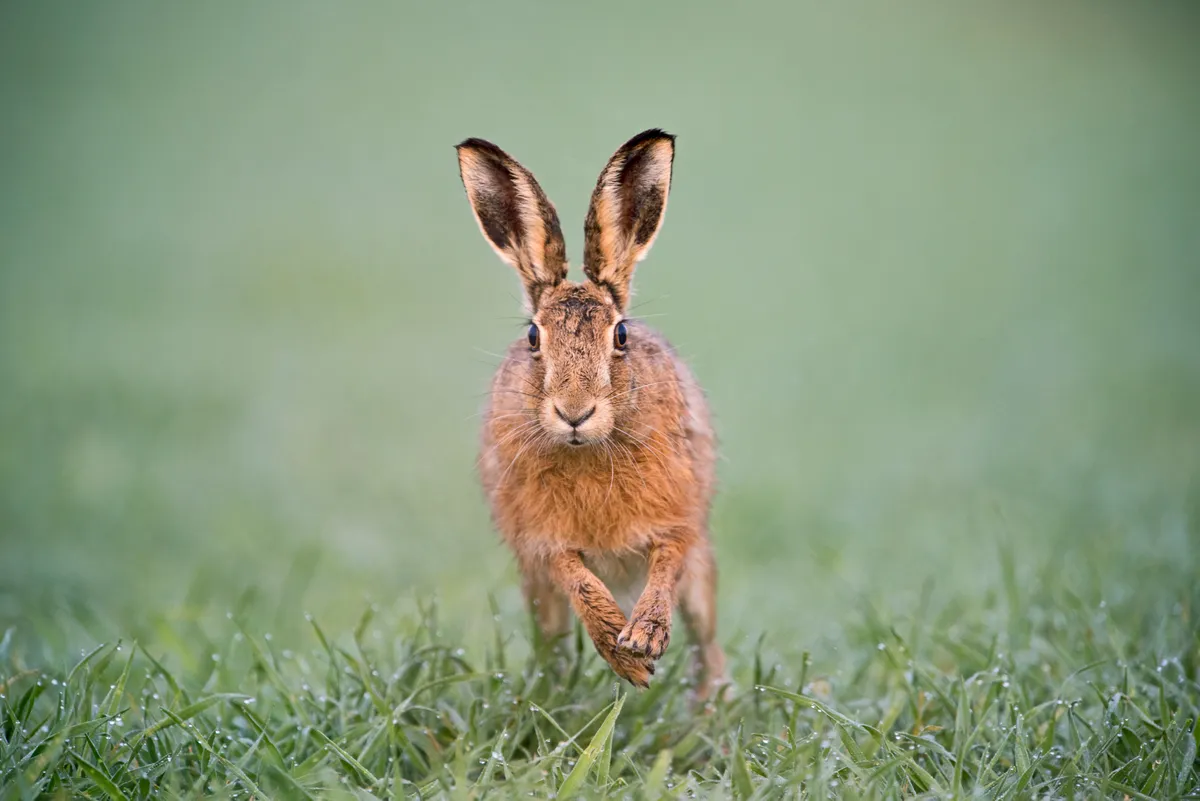
The brown hare is the most common and you’re most likely to see these on arable farmland and large, flat expanses of grassland. The open plains of Suffolk, Norfolk and Cambridgeshire are a stronghold for brown hares, as are the Marlborough Downs in Wiltshire.
Brown hares have golden brown fur and a white belly, and they have long ears with black tips. At full pelt, they can reach speeds of up to 40 miles per hour.
Mountain hare
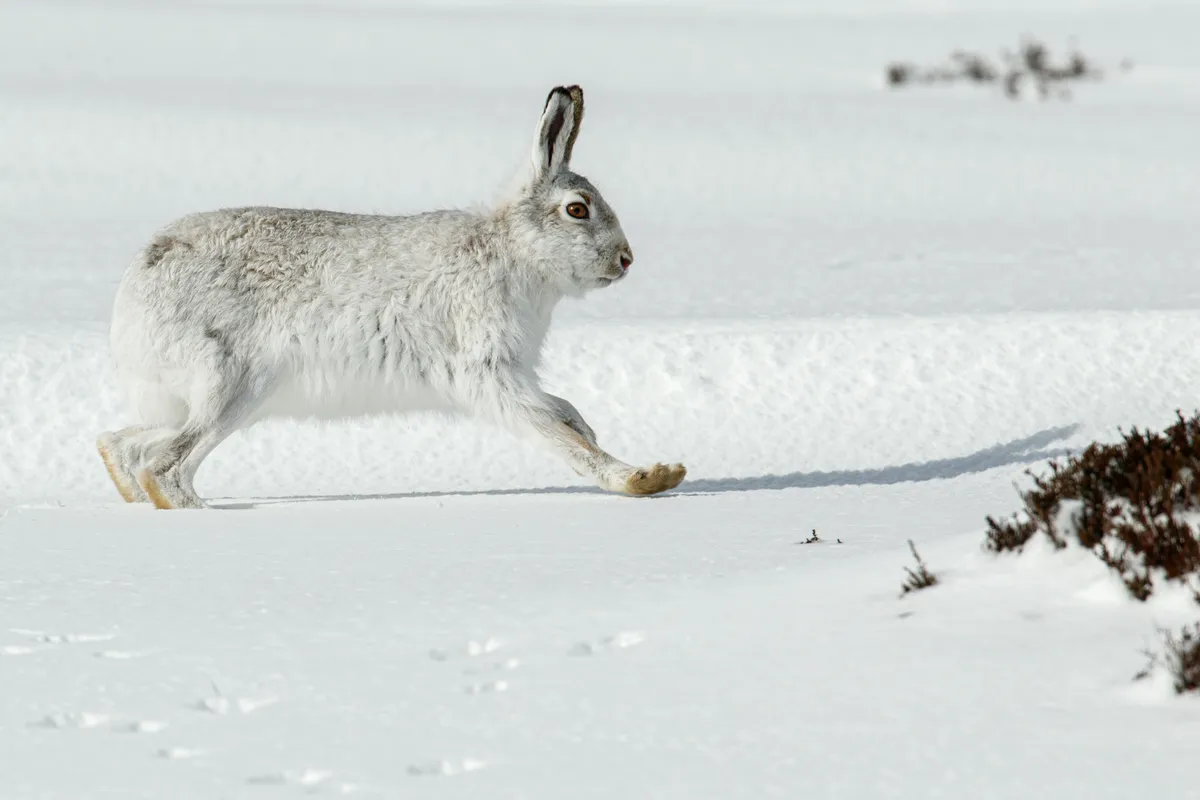
Mountain hares are found in Scotland and the north of England, largely in upland areas. They are smaller than brown hares and have the ability to turn white in winter to blend with snow. When the snows dust the hills, the enigmatic mountain hare appears doubly appealing as it dons its white winter coat. The mountain hare and the stoat are the only British mammals to do so. It’s all in the name of camouflage of course – these hares have many predators, such as foxes and golden eagles – and yet they can be surprisingly easy to spot if you are in the right place.
Scottish mountain hare
The Scottish mountain hare (Lepus timidus scoticus) is a subspecies of the mountain hare (Lepus timidus) and is native to the Highlands of Scotland. These charming animals are also known as blue hares due to the bluish tinge their coat takes on during the transition to winter conditions. They are smaller and more compact than the brown hare of the lowlands.
Irish hare
Irish hares are found in Ireland and are smaller than brown hares. Unlike mountain hares, they rarely change colour in winter. They are thought to be the only native species of Lagomorph in the British Isles (rabbits and hares were both introduced by humans).
How fast can a hare run?
Hares are the fastest land mammals in the country, and some have been recorded running at up to 72kph (45mph) to escape danger.
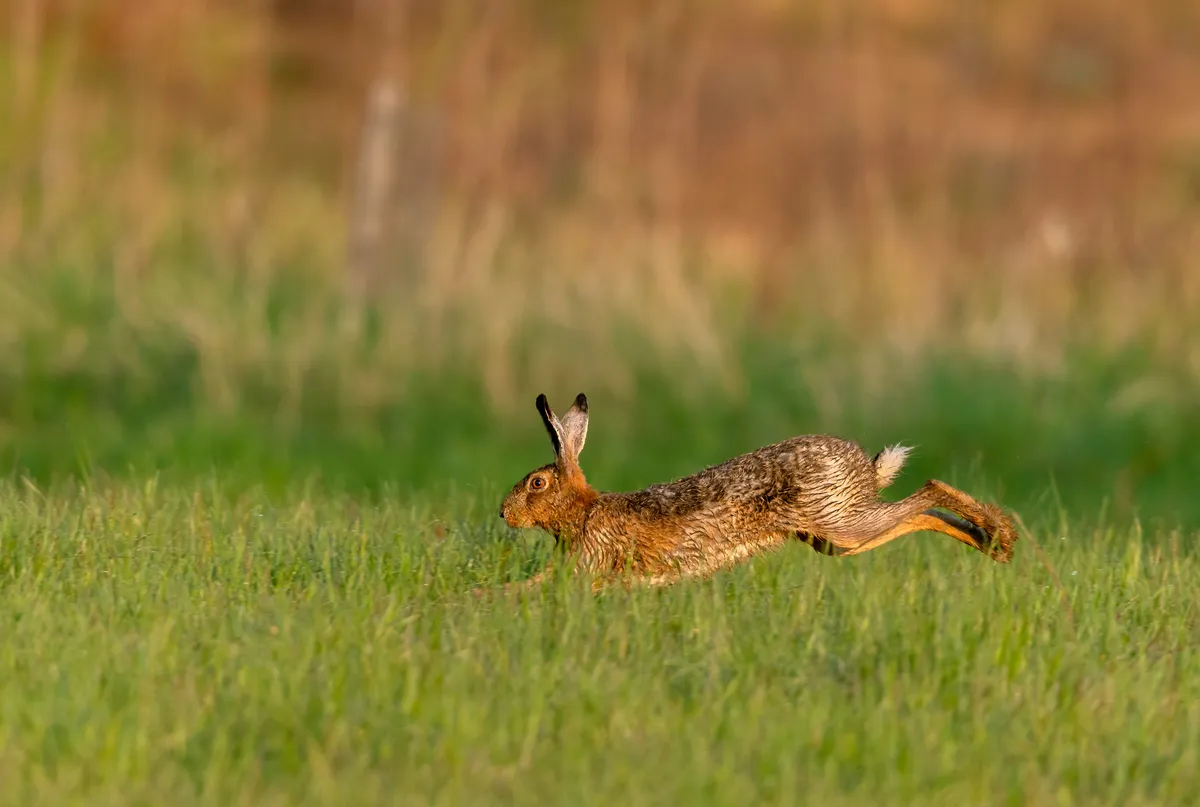
What is a male and female hare called?
Like rabbits, male hares are bucks and females are does. Male hares are also known as jacks, and females jills.
What is a baby hare called?
A baby hare is called a leveret. It is born to run, literally; they weigh less than an iPhone at birth, but are open-eyed and active. The little family scatters within days, meeting up after sunset for a brief, single feed from the doe. They grow while the crops around them reach their own shimmering heights, and after barely a month, are weaned. Most does will not breed in their year of birth, although after that may have up to three litters a year.
Where to see hares in Britain
Hares are widespread across the UK, but they are common on some Wildlife Trust and National Trust sites. Look for them in arable farmland, meadows and grassland that's near woodland or well-established hedgerows, where they have plenty of options for shelter. Get up early – and come without your dog!
Track them by looking out for tufts of fur caught in brambles and barbed wire, or their droppings on the ground, which resemble those of a rabbit, but are larger, with a slightly tapered end. The best time to spot hares is either first thing in the morning or early evening.
Why do hares box?
Mad March hares have been a staple of the English language for at least 500 years, and no doubt caught the eye of rural communities long before that. The term refers to how hares become even more energised in spring and will, chase each other, rearing up and sparring with their front paws. Fur often flies!

The hare's world is mostly male-dominated – that is, bucks outnumber does, even as embryos. When a doe nears oestrus (when she is fertile and ready to mate), a buck guards her, boxing and biting any other males who dare to approach. He urinates on his rear paws and kicks backwards to scent-mark, but the doe will fight him, too, if he courts her too soon. She will also box other males, testing their strength and suitability for mating.
Boxing hares are usually reported in February and March but may take place all through spring and summer. The big difference is that later in the year the crops and meadows have grown tall, hiding the hares' activities.
Discover more about this phenomenon with our guide to March hares.
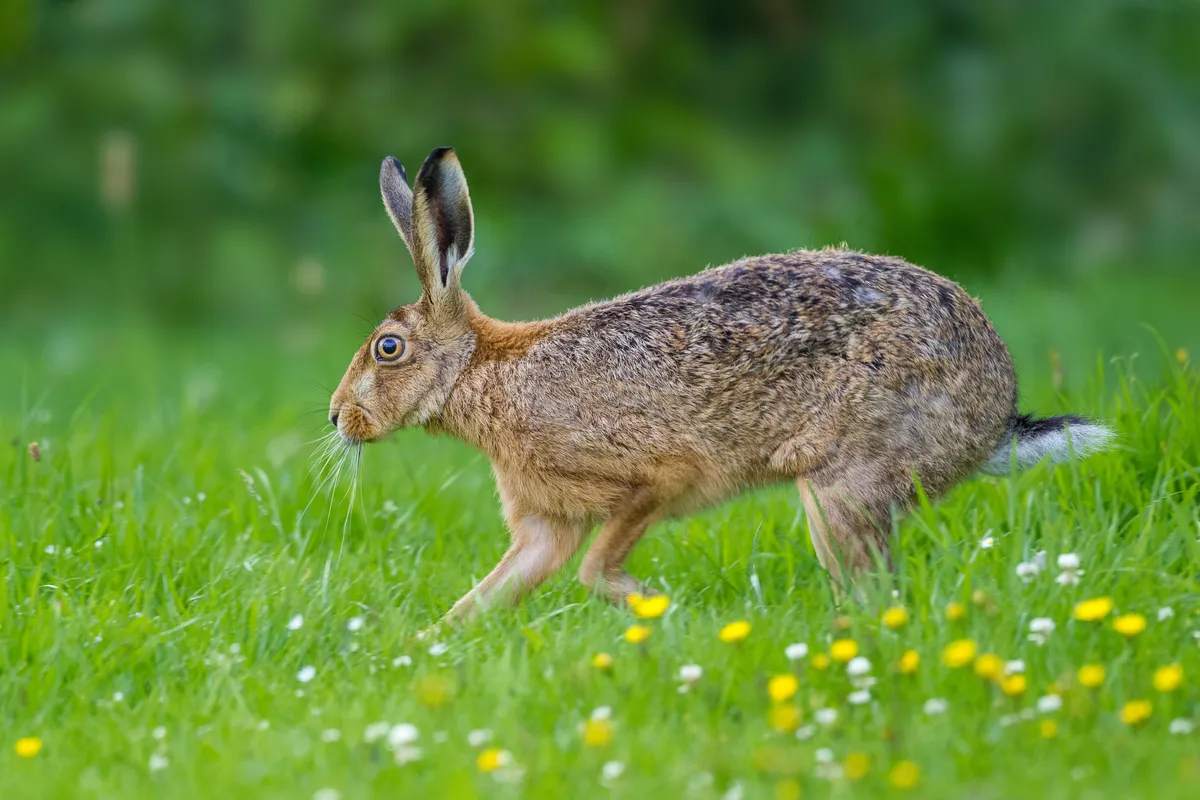
What is the difference between a hare and a rabbit?
Hares are much larger than rabbits, weighing up to 4kg while a large rabbit is half that weight. Discover how to tell the difference between a hare and a rabbit in our expert Q&A.
Hares in folklore
There is much folklore about the hare. Samuel Pepys carried a hares-foot which he believed cured him of colic, but death was on the minds of Derbyshire miners if a white hare stared at them while they ate – this eerie creature would lead hapless souls into the darkness, never to be spied again.
Romans, despite forsaking Celtic taboos about eating hares, added the species to their own beliefs as a symbol of fertility and renewal. A grazing hare stars in an richly ornate Roman mosaic unearthed in Cirencester, a discovery celebrated in the 21st century by the colourful fibreglass hares on display in the town.
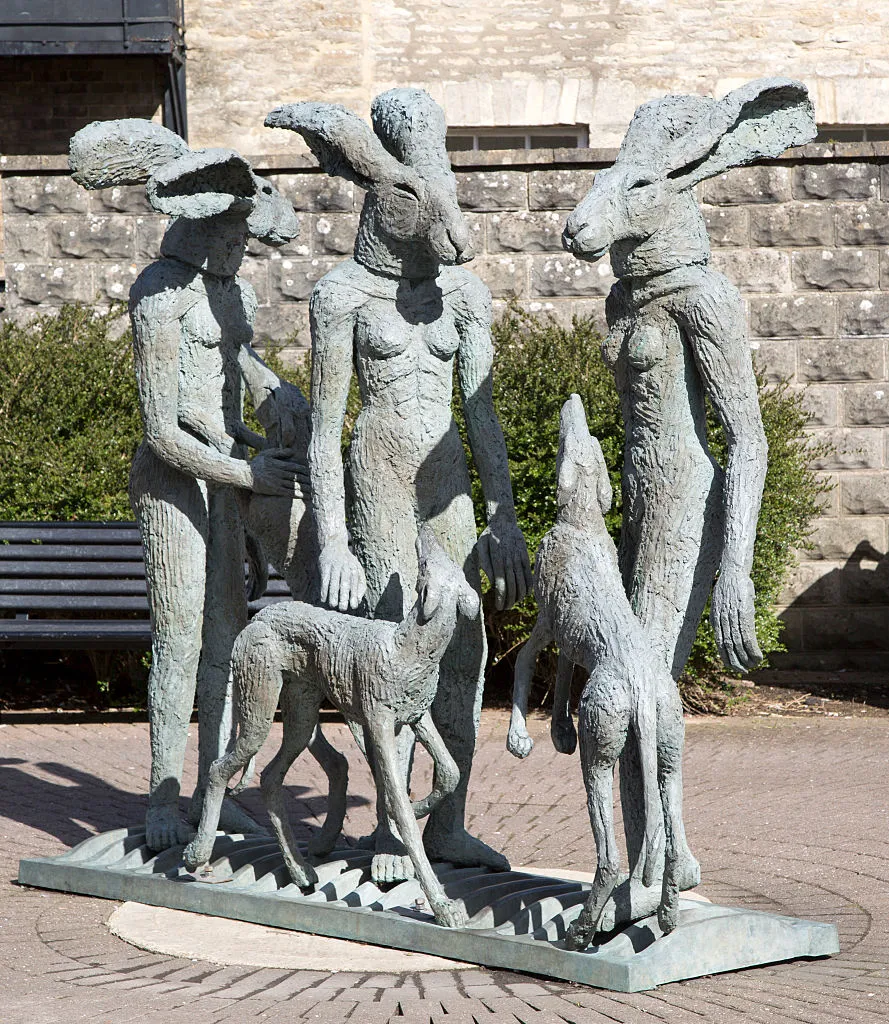
Hares have assumed a side role during Christianity’s most important celebration. It is true that eggs were painted at Easter long before the Osterhase – literally, the Easter hare – crossed the North Sea from Protestant districts of Germany, but in its own country, children were already alert for this magical animal that hid eggs in herb gardens. Oddly, the Leicestershire village of Hallaton independently acquired an ancient hare-related tradition of its own: what it calls a hare pie – which never contained any hare – was flung to a riotous crowd as an annual scramble on Easter Monday.
These days, rabbits have stolen the hare’s Easter thunder, and the Osterhase is known universally as a bunny.
Why are Britain's hares declining?
Hares are a species of farmland, and over two thirds of Britain is agricultural so it would seem hares ought to be common. Yet, like the animal itself, agriculture twists and turns, and its ever decreasing ability to carry nature is a matter of profound concern.
Their distribution in Britain tells the story. Hares have acquired a south-eastern slant – the intensive sheep grazing of the south-west excludes them. Cattle grazing creates better hare habitat than sheep pasture, but arable fields remain a critical support system, especially where hare-friendly measures such as patches of undisturbed cover are mixed in. Like so many species, hares benefit most from a mixed agricultural landscape rather than one devoted to a specific crop.
There are other difficulties; rabbit haemorrhagic disease virus has been recorded in hares, and more commonly, poaching haunts the species. Hare coursing is a terrible business on all levels. Apart from the cruelty to hares, it causes distress to rural communities and is often linked with wider rural crime. The hare – always listening, always watching – is sadly wise to maintain what one a Victorian writer called a “passion of fear”, but it is time to give something new to the hare: a land where it can relax, at least from overt fear of us.
The main natural predators of rabbits and hares are foxes, weasels, stoats, polecats, buzzards and golden eagles.
